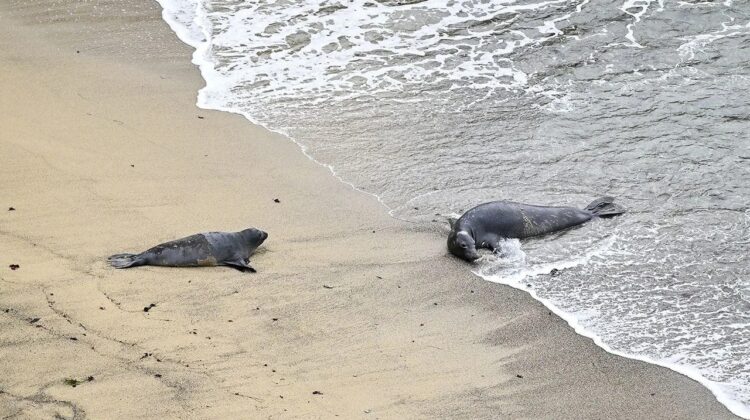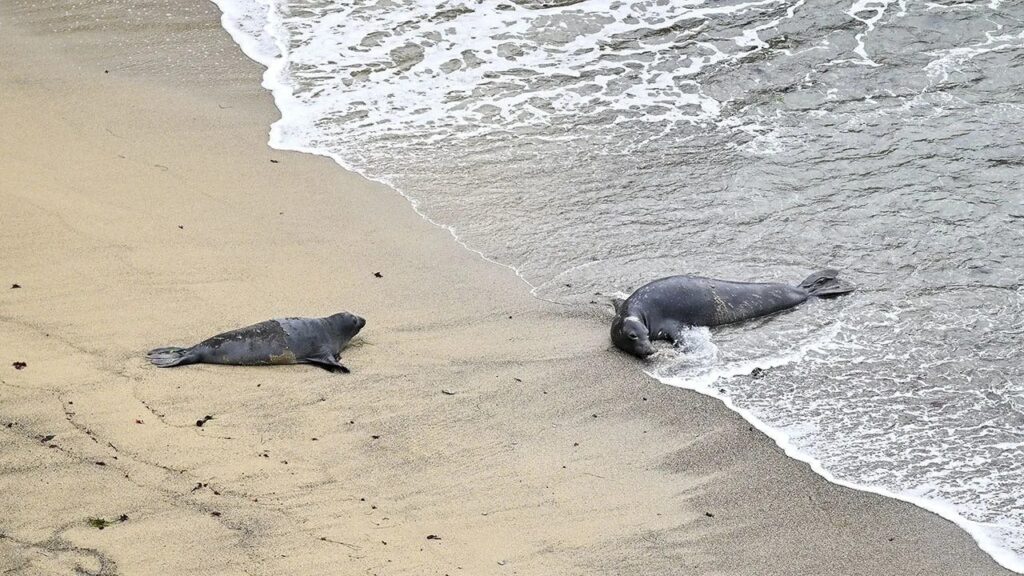
Since 2016, the California coastline has been plagued by a disturbing phenomenon—scores of decapitated seals discovered on northern beaches. The unsettling discovery prompted scientists at the Noyo Center for Marine Science to embark on an investigation, determined to unravel the mystery surrounding these grisly scenes.
Sarah Grimes, a researcher at the Noyo Center, described the gruesome scenes she encountered during her initial investigations to The Mercury News. “It was so gruesome,” Grimes exclaimed, likening her role to a “marine mammal CSI.” The unsettling sight of dead seal pups with their heads torn off left her questioning, “What the heck did that?”

Driven by the need for concrete evidence, Grimes and her team turned to the shores of MacKerricher State Park. It was there that a breakthrough occurred, thanks to the keen observations of a Ph.D. student from the University of California Santa Cruz, Frankie Gerraty. Using camera traps, Gerraty captured compelling footage of a coyote in the act of dragging a harbor seal pup and decapitating it.
“We set up camera traps and got one really solid video of a coyote dragging a harbor seal pup and beheading it,” Gerraty revealed. The evidence pointed to predation at multiple sites along the Northern California coast, marking a critical step toward solving the mystery.
Despite the breakthrough, researchers are exercising caution and refraining from immediately sharing the video. They are diligently working to comprehend the nuances of what they describe as a “seemingly new predator-prey relationship,” according to the Los Angeles Times.

Coyotes, once scarce in the region due to poisoning and hunting by farmers and ranchers, are now making a comeback. Grimes emphasized that the presence of coyotes is a part of the natural balance that has been missing for some years. “The coyote is not a villain. It’s part of the ecosystem,” she told the LA Times.
Nevertheless, the question remains: Why are coyotes specifically targeting the heads of the seals, leaving the bodies behind? Scientists are yet to provide a definitive answer, but they speculate that the nutrition content of seal brains may play a role in this peculiar hunting behavior.
In response to the ongoing investigation, annual closures have been implemented at Point Reyes National Seashore until March 31, 2024. This measure aims to protect elephant seal pups from disturbance during their vulnerable pupping season, as stated on the park’s website.

The seals falling victim to the coyote attacks are identified as harbor seals, and research efforts will persist to understand the hunting patterns and the potential impact on the marine animal population. As scientists continue to piece together this intricate puzzle, the revelation of the coyote’s role in the decapitated seals’ mystery underscores the delicate balance within the coastal ecosystem.

Leave a Reply